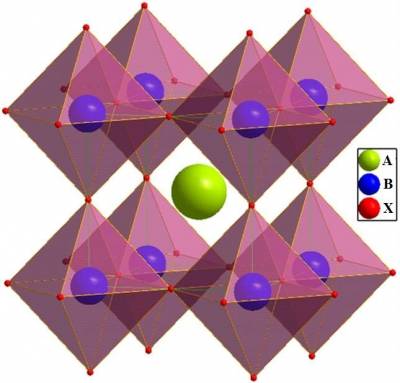The potential of Perovskite Solar Cells
A new branch of research at the IMD wants to exploit the excellent photovoltaic performance and low cost of perovskite to design commercially viable solar cells.
Their excellent photovoltaic performance comes from their bandgap being easy to tune, and as they are earth-abundant and involve a low-energy production, they are incredible simple to process. When these two factors are combined, perovskites hold the potential to be used in the large-scale manufacturing of photovoltaic (PV) modules.
The challenge
To achieve this goal these is one key challenge: producing a perovskite solar cell with long-term stability and reproducible performance.
The science behind the research
The basic building component of the organolead halid perovskite family is derived from the ABX3 crystal structure, where the A site organic cations is usually CH3NH3+ or CH2NH=CH2+, and the B site cation is typically a divalent metal Pb2+ or Sn2+ and its ligand anions X as I-, Br- or Cl-, as shown in Fig 1.
| Fig 1. ABX3 Crystal Structure |
 |
Ongoing research
To improve the solar cell performance researches at the IMD are partially substituting I- with Cl- and/or Br- into the perovksite material. This enhances the materials crystallization, and most importantly increases its conductivity and charge diffusion length.
The efficiency of the solar cell can be further improved by using a new interface functional layer (such as graphene or oxidized nanoparticles), to suppress carrier recombination, and facilitate carrier transport and collection.
Potential applications
Understanding how to make a durable and reliable perovskite solar cell is the first step to developing commercial viable products which can be applied to power electronics and low power applications in buildings.
For further information contact Dr Mojtaba Abdi Jalebi
+44 (0)20 7679 3855 | m.jalebi@ucl.ac.uk
 Close
Close

